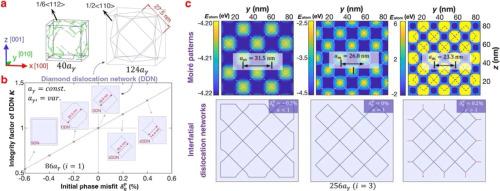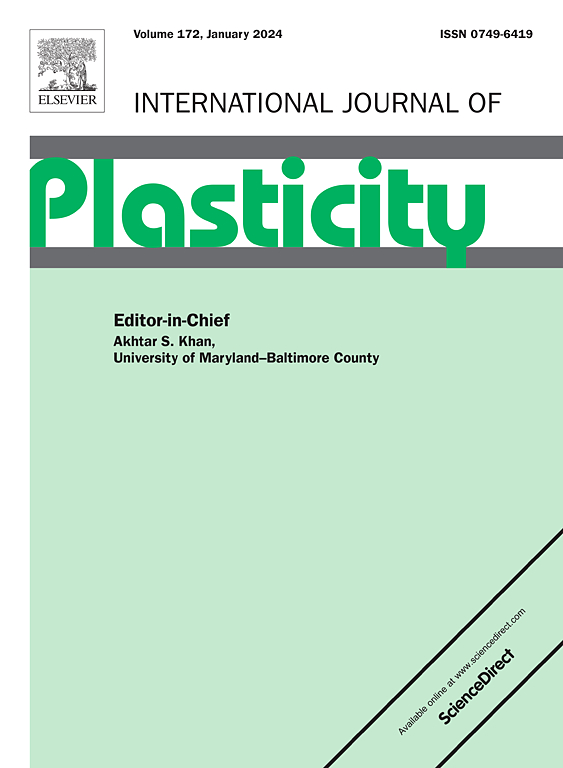镍基高温合金中的界面位错网络:莫尔条纹和样品尺寸之间的隐藏联系
IF 9.4
1区 材料科学
Q1 ENGINEERING, MECHANICAL
引用次数: 0
摘要
镍基单晶高温合金由于其独特的两相组织而表现出优异的屈服强度和抗蠕变性能。这一计算机研究报告了控制界面位错网络(IDNs)形成的莫尔模式和样品大小之间的隐藏关系。moir本文章由计算机程序翻译,如有差异,请以英文原文为准。


Interfacial dislocation networks in nickel-based superalloys: The hidden link between moiré patterns and sample sizes
Nickel-based single crystal superalloys exhibit exceptional yield strength and creep resistance owing to their distinctive two-phase microstructure. This in silico study reported the hidden relationship between the moiré patterns and sample sizes, which govern the formation of interfacial dislocation networks (IDNs). The moiré superlattice arises from lattice misfit, and its compatibility with the γ′ phase size determines the integrity of IDNs, resulting in size-dependent dislocation patterns. Smaller models (size < 25 nm) display discrete dislocation networks due to high residual stress, while larger ones (size > 25 nm) maintain uniformly distributed perfect dislocation networks. These initial IDNs contribute to pseudo-elastic behavior and influence the dislocation activities. Specifically, smaller models experience intensified dislocation pile-up, resulting in higher plastic strength and lower ductility. This study provides insights into γ′ phase size effects on moiré patterns and mechanical behaviour across the elastic to plastic regimes in nickel-aluminium superalloys, offering valuable guidance for their modeling and experimental design.
求助全文
通过发布文献求助,成功后即可免费获取论文全文。
去求助
来源期刊

International Journal of Plasticity
工程技术-材料科学:综合
CiteScore
15.30
自引率
26.50%
发文量
256
审稿时长
46 days
期刊介绍:
International Journal of Plasticity aims to present original research encompassing all facets of plastic deformation, damage, and fracture behavior in both isotropic and anisotropic solids. This includes exploring the thermodynamics of plasticity and fracture, continuum theory, and macroscopic as well as microscopic phenomena.
Topics of interest span the plastic behavior of single crystals and polycrystalline metals, ceramics, rocks, soils, composites, nanocrystalline and microelectronics materials, shape memory alloys, ferroelectric ceramics, thin films, and polymers. Additionally, the journal covers plasticity aspects of failure and fracture mechanics. Contributions involving significant experimental, numerical, or theoretical advancements that enhance the understanding of the plastic behavior of solids are particularly valued. Papers addressing the modeling of finite nonlinear elastic deformation, bearing similarities to the modeling of plastic deformation, are also welcomed.
 求助内容:
求助内容: 应助结果提醒方式:
应助结果提醒方式:


